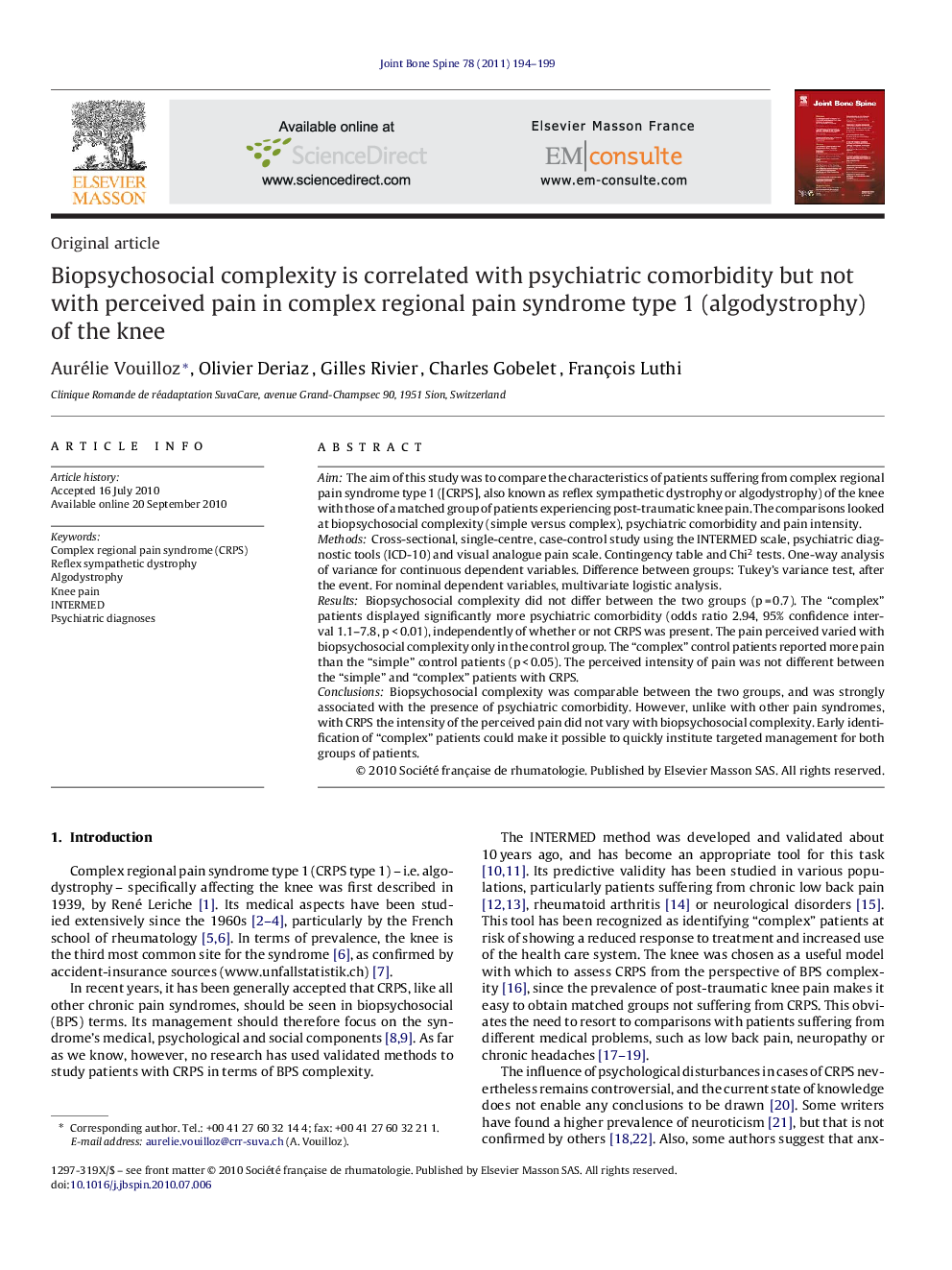| Article ID | Journal | Published Year | Pages | File Type |
|---|---|---|---|---|
| 3366496 | Joint Bone Spine | 2011 | 6 Pages |
AimThe aim of this study was to compare the characteristics of patients suffering from complex regional pain syndrome type 1 ([CRPS], also known as reflex sympathetic dystrophy or algodystrophy) of the knee with those of a matched group of patients experiencing post-traumatic knee pain. The comparisons looked at biopsychosocial complexity (simple versus complex), psychiatric comorbidity and pain intensity.MethodsCross-sectional, single-centre, case-control study using the INTERMED scale, psychiatric diagnostic tools (ICD-10) and visual analogue pain scale. Contingency table and Chi2 tests. One-way analysis of variance for continuous dependent variables. Difference between groups: Tukey's variance test, after the event. For nominal dependent variables, multivariate logistic analysis.ResultsBiopsychosocial complexity did not differ between the two groups (p = 0.7). The “complex” patients displayed significantly more psychiatric comorbidity (odds ratio 2.94, 95% confidence interval 1.1–7.8, p < 0.01), independently of whether or not CRPS was present. The pain perceived varied with biopsychosocial complexity only in the control group. The “complex” control patients reported more pain than the “simple” control patients (p < 0.05). The perceived intensity of pain was not different between the “simple” and “complex” patients with CRPS.ConclusionsBiopsychosocial complexity was comparable between the two groups, and was strongly associated with the presence of psychiatric comorbidity. However, unlike with other pain syndromes, with CRPS the intensity of the perceived pain did not vary with biopsychosocial complexity. Early identification of “complex” patients could make it possible to quickly institute targeted management for both groups of patients.
